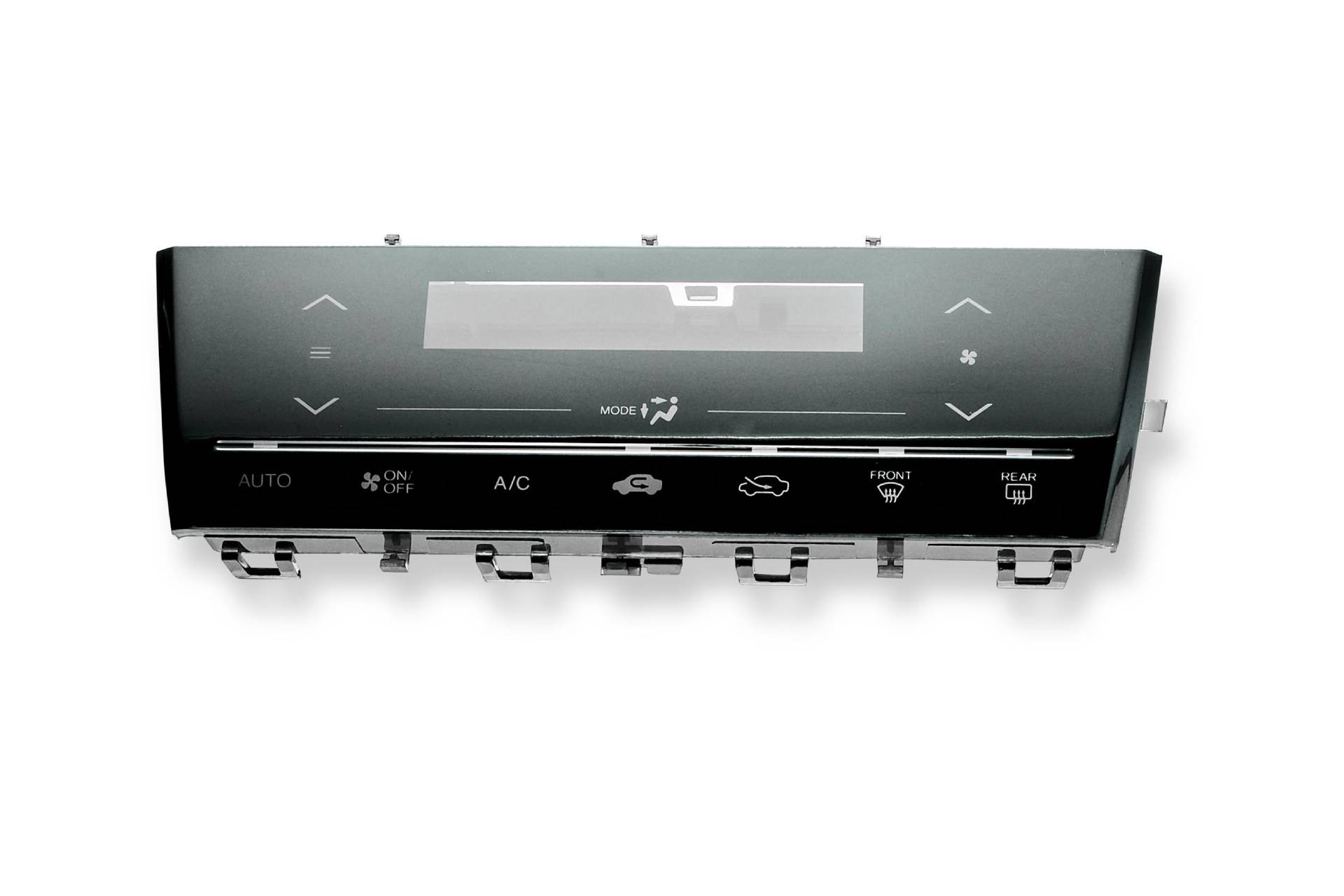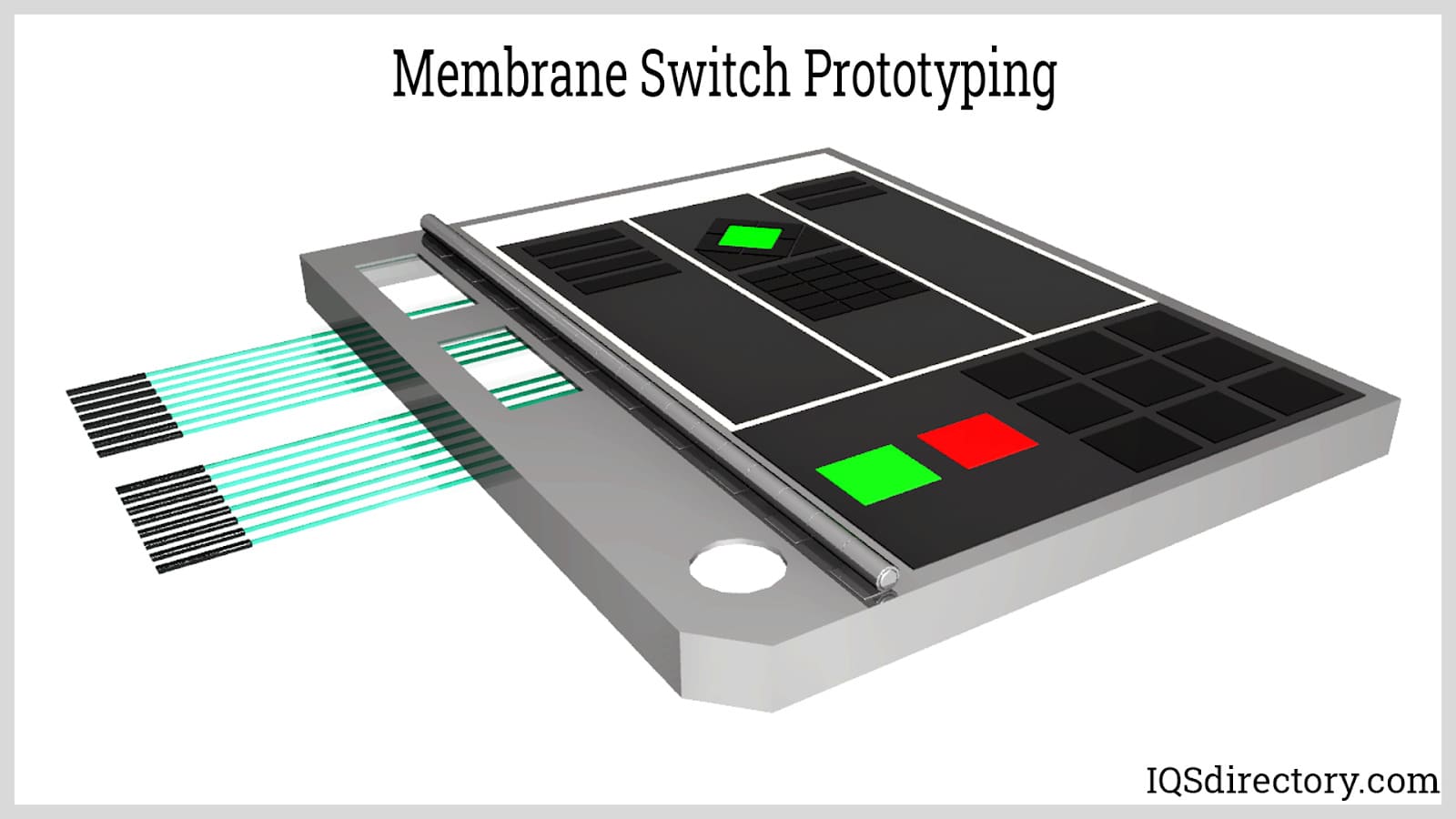Choosing a nearby membrane switch manufacturer can lower lead times and shipping costs.
Choosing a nearby membrane switch manufacturer can lower lead times and shipping costs.
Blog Article
Everything About Membrane Layer Switch Over: Understanding Its Style and Capability
When you assume regarding the control interfaces in modern gadgets, membrane layer buttons often come to mind. Let's explore what collections membrane layer changes apart from various other control systems.
What Are Membrane Layer Buttons?

Membrane layer switches can additionally be personalized concerning form, dimension, and graphics, allowing makers to create unique interfaces customized to specific items. On the whole, membrane buttons play a substantial role in boosting individual experience across a vast selection of applications.
Just How Membrane Layer Switches Work
When you push a trick on a membrane switch, it triggers a simple yet efficient device. membrane switch manufacturer. The leading layer, frequently made of adaptable material, presses down onto a conductive layer under it.
You'll notice that the tactile feedback differs based upon the switch layout, using either a soft click or a much more pronounced response. Once you launch the trick, the membrane layer returns to its initial placement, resuming the circuit and quiting the signal. This procedure happens almost instantly, making sure a receptive user experience.
Membrane switches are preferred as a result of their longevity and resistance to dirt and moisture, making them ideal for various applications, from household appliances to medical tools. Comprehending this operation assists you appreciate their widespread use.
Key Components of Membrane Buttons
Recognizing the vital parts of membrane layer buttons is basic for realizing their capability and style. At the core, you'll discover the graphic overlay, which provides the visual interface for individuals. Below that, there's a spacer layer that separates the circuit layers, guaranteeing that they don't make contact till pressed. The circuit layer is where the magic happens; it includes conductive traces that finish the circuit when you push the switch. One more vital component is the glue backing, permitting the button to follow surfaces safely. Finally, the protective layer shields versus environmental factors and put on, extending the switch's life-span. Each part plays a significant function in making sure trustworthy performance and individual interaction. By understanding these components, you'll obtain understanding into just how membrane layer switches over run and their value in different applications.
Materials Used in Membrane Change Design
The performance and sturdiness of membrane layer changes heavily rely on the products used in their design. You commonly run into polyester and polycarbonate as main substrates as a result of their superb stamina and adaptability. These products resist scratches and chemicals, making them perfect for requiring atmospheres.
The conductive layers often utilize silver or carbon, chosen for their integrity and conductivity. membrane switch manufacturer. Silver supplies superior efficiency, while carbon is a cost-effective alternative. For the overlay, you might take into consideration a matte or shiny coating, depending upon your aesthetic demands and individual experience
Make particular to pick adhesives that endure environmental elements like temperature and moisture. Selecting the right materials will certainly assure your membrane layer button stands the examination of time.
Design Considerations for Membrane Buttons
While developing membrane layer buttons, it's essential to think about various variables that affect their performance and individual experience. Beginning by concentrating on the layout and switch size; ensure they're intuitive and simple to browse. Think about the tactile comments you want to provide-- will customers require a noticeable click or a softer touch? In addition, consider the materials you'll utilize, as they'll impact toughness and appearances.
Do not ignore the graphic layout; clear labeling and shade contrast are substantial for click for info exposure. Validate your layout suits environmental factors, like wetness or temperature level variations, which might impact performance. Lastly, remember the significance of screening prototypes with genuine individuals to collect feedback and make required changes. This iterative process helps you fine-tune the style, validating it meets both useful and aesthetic needs efficiently. By thoroughly thinking about these aspects, you'll produce a membrane layer button that boosts usability and complete satisfaction.
Applications of Membrane Buttons
Membrane buttons are flexible parts found in different applications, from industrial equipment to customer electronics. You'll see their impact in equipments that call for resilient user interfaces and in tools that gain from sleek designs. Recognizing these applications aids you value the functionality and usefulness of membrane layer buttons in daily innovation.
Industrial Tools Usage
When you're looking to boost the performance of commercial devices, membrane switches use a reputable service that incorporates sturdiness with straightforward layout. These buttons are best for severe environments, supplying resistance to dirt, moisture, and chemicals. Accept membrane buttons to simplify your procedures and improve overall efficiency.
Consumer Electronics Combination
In the domain of consumer electronics, membrane layer buttons play a crucial duty in enhancing customer interaction and tool performance. You'll find them in devices like microwaves, push-button controls, and pc gaming consoles, providing a smooth method to connect with innovation. Their smooth design enables for very easy integration right into various products, making controls user-friendly and user-friendly. With their capacity to integrate graphics and backlighting, you can take pleasure in a modern aesthetic that complements the device's total look. Membrane layer switches additionally assure resilience and resistance to dirt and dampness, expanding the life expectancy of your electronic devices. By choosing membrane switches, you boost not just the performance but also the style of your devices, making everyday communications smooth and pleasurable.
Advantages and Disadvantages of Membrane Layer Buttons
While membrane buttons supply a variety of benefits, they also include some disadvantages that you should take into consideration. One significant advantage is their small layout, making them optimal for space-constrained applications. They're likewise affordable, offering a durable option with a low production price. Furthermore, their smooth surface area is simple to clean, enhancing hygiene in atmospheres like hospitals.

Nonetheless, there are disadvantages. Membrane switches can have a much shorter life-span contrasted to mechanical buttons, particularly under hefty usage. They can likewise be much less responsive, which could influence customer feedback throughout procedure. If damaged, fixing them can be difficult and often requires total replacement. Inevitably, their level of sensitivity to severe temperatures and environmental conditions might restrict their efficiency in specific setups. Stabilizing these benefits and drawbacks will certainly assist you determine if membrane switches are the appropriate suitable for your job.
Regularly Asked Inquiries
How Much Time Do Membrane Layer Switches Over Typically Last?
Membrane changes commonly last between 5 Going Here to 10 years, depending on usage and environmental problems. You'll intend to review variables like wear, exposure to wetness, and temperature level changes to determine their longevity effectively.
Can Membrane Layer Switches Over Be Customized for Specific Layouts?
Yes, you can tailor membrane switches to fit certain styles (membrane switch manufacturer). You'll have the flexibility to choose shades, forms, and designs that match your project's demands, guaranteeing they mix perfectly with your total aesthetic
What Is the Price Variety for Membrane Layer Switch Over Production?
The price range for membrane layer button production usually drops between $1 and $10 each, depending on factors like style complexity, quantity, and materials. You can obtain quotes from suppliers to locate the very best alternative.

Are Membrane Layer Switches Over Water-proof or Resistant?
Membrane layer buttons can be designed to be water-proof or resistant, relying on products made use of and building and construction techniques. If you need them for wet environments, guarantee you specify those needs throughout the design process.
Just How Do Membrane Changes Contrast to Standard Switches?
Membrane switches are typically thinner and more flexible than typical buttons, supplying a smooth design. They're typically less complicated to clean and integrate, but may not supply the responsive comments you're made use of to with mechanical options.
Final thought

Report this page